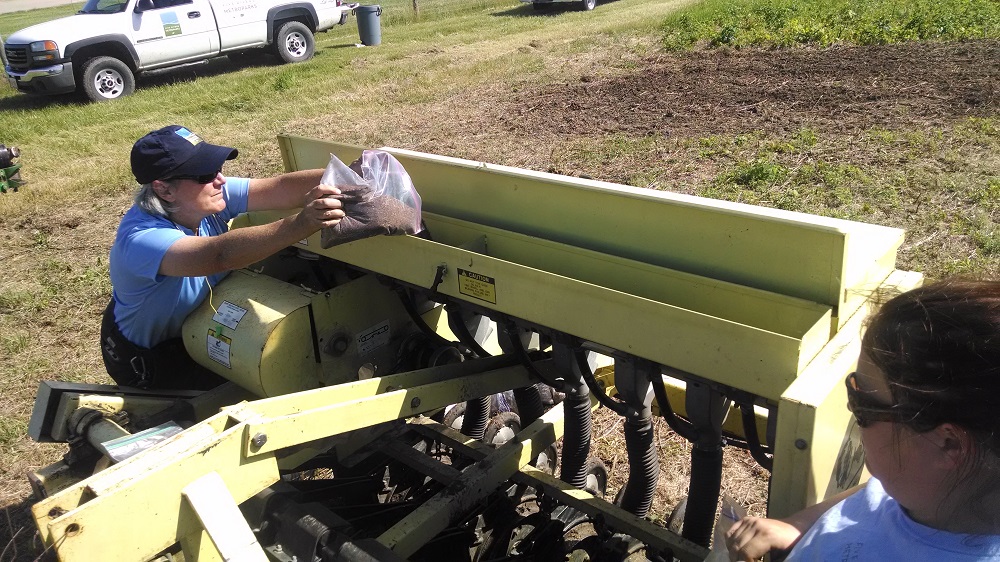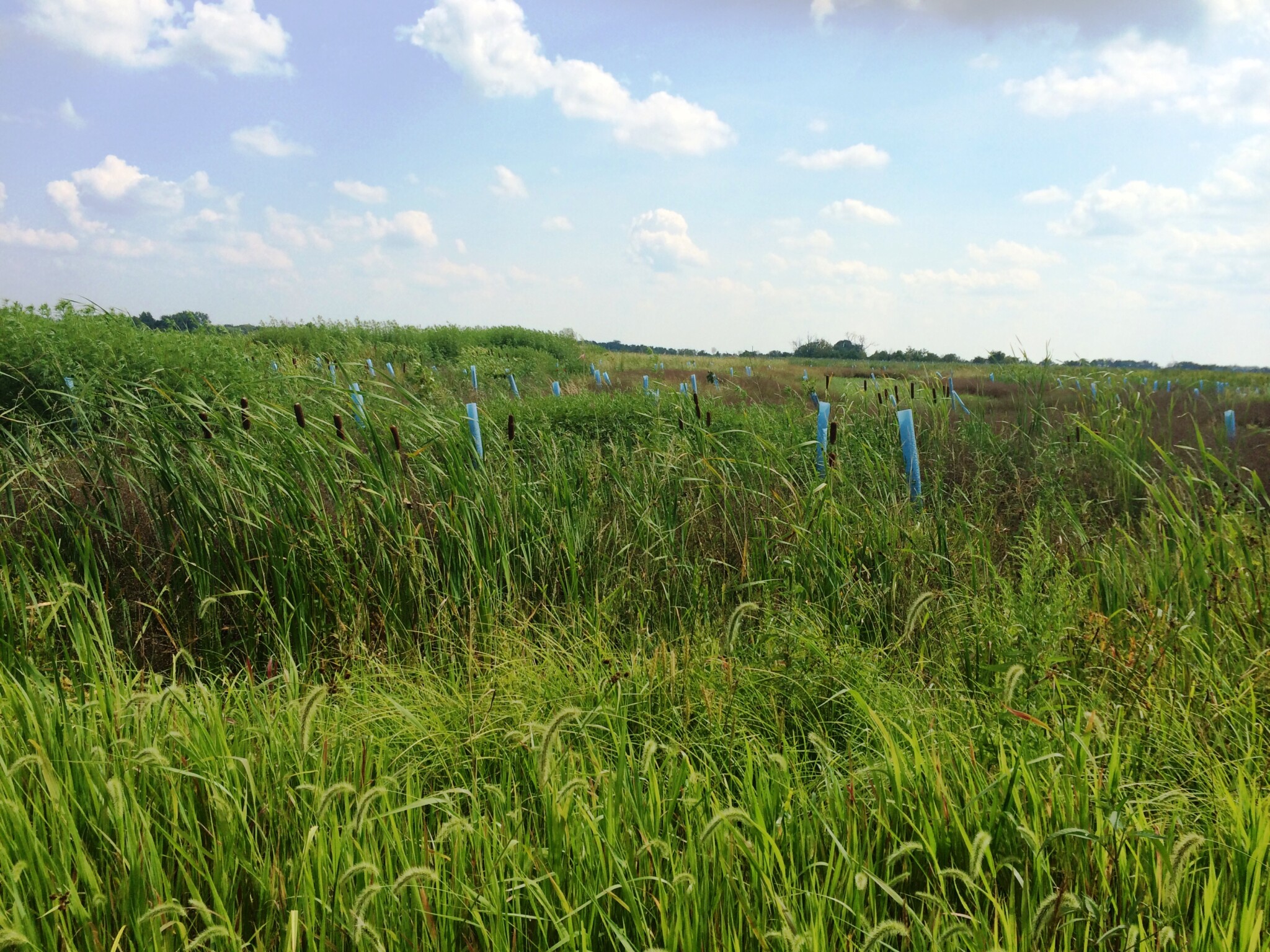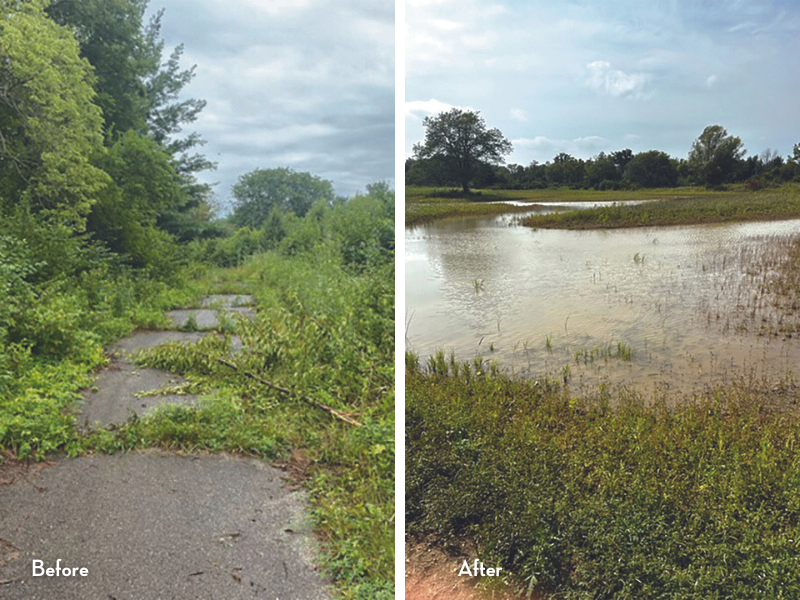Published May 4, 2016
MetroParks Help Clean Air and Water
Heads up! This article was published 8 years ago.
Five Rivers MetroParks manages some of the best natural areas in Montgomery County. But did you know these forests, wetlands and prairies are more than beautiful places to hike and watch wildlife? These habitats also help clean the local air and water through natural processes called ecosystem services. The plants in each habitat, along with the unique microbes in the soil, perform these services as part of their normal growth pattern — which is why protecting these habitats for the future is critical.
Clean Water
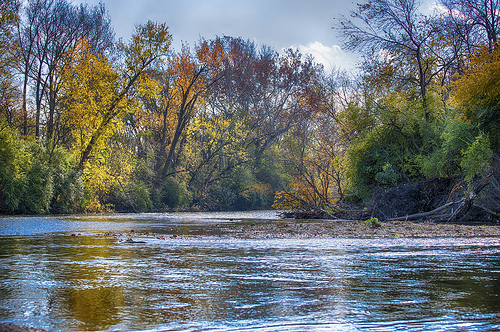 Clean water is one of the most important parts of a healthy environment. During an average year, more than 11,000 acres of natural habitats in MetroParks filter an estimated 11 billion gallons of water. That’s enough to fill 16,853 Olympic swimming pools.
Clean water is one of the most important parts of a healthy environment. During an average year, more than 11,000 acres of natural habitats in MetroParks filter an estimated 11 billion gallons of water. That’s enough to fill 16,853 Olympic swimming pools.
Rain falling through the air picks up different particles. When it lands in a habitat, such as a forest, the plant roots and soil microbes help remove the particles as the water runs into a stream or is absorbed into the groundwater. Forests also release water more slowly than hard surfaces, which helps avoid flooding and erosion.
The Role of Wetlands
Wetlands are a unique habitat within MetroParks and are known as “nature’s kidneys” for their special water filtering ability. MetroParks land contains more than 170 acres of wetlands, and many of these wetlands were created by MetroParks.
When water flows through a wetland, special plants and microbes remove suspended soil and nutrients from the water. This helps the wetland plants grow and improves the water quality. Woodman Fen Conservation Area is an excellent example of a wetland where storm water from the surrounding neighborhood is cleaned by wetlands MetroParks created before being released to a stream.
The Role of Forests
Another important habitat for improving water quality is forests, especially along rivers. MetroParks land contains more than 1,000 acres of forests near rivers and streams. When flooding occurs, these forests provide a place for the flood waters to spread out and slow down. When this happens, soil suspended in the water settles and is left in the forest when water levels return to normal.
The roots of the trees then grow into this new soil, providing nutrients for the trees and preventing the soil from washing downstream. The forests behind the Miami Conservancy dams at Huffman, Taylorsville, Englewood and Germantown MetroParks provide examples of where this process takes place.
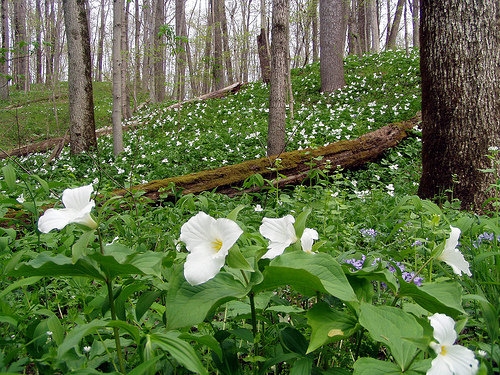 Clean Air
Clean Air
Besides helping filter water, trees also help filter the air. MetroParks land contains more than 6,000 acres of forest habitats — and staff and volunteers planted more than 20,000 trees as part of MetroParks’ reforestation program in spring 2016, in addition to tens of thousands more planted as part of earlier reforestation efforts.
As each tree grows, it draws air into the leaves and removes gases and particles. Trees use carbon dioxide to grow, and MetroParks forests remove an estimated 14 million pounds per year.
- Small particles often are a serious air quality problem in urban areas, and MetroParks forests remove an estimated 155,000 pounds per year. Ozone is also a serious air quality issue, and MetroParks forests remove more than 157,000 pounds of ozone per year.
By creating and managing natural habitats, MetroParks not only provides homes for wildlife and a place for people to connect with nature — it also helps ensure clean air and water for current and future generations.


